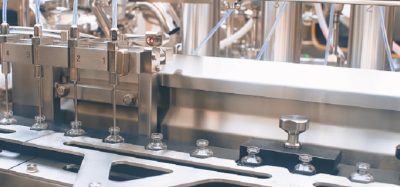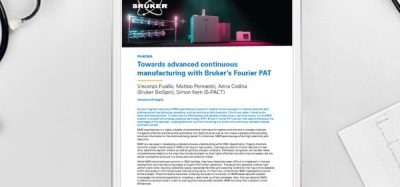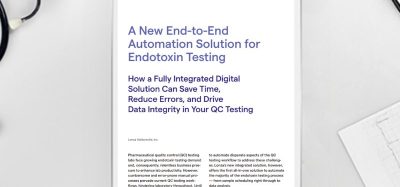Development and implementation of an automated compound screening activities facility
Posted: 20 March 2009 | Sheraz Gul (Fraunhofer Institute for Molecular Biology and Applied Ecology) | No comments yet
There has been a continuous move by the large commercially orientated players involved in Drug Discovery to initiate novel methods to increase income streams and productivity. An example of the former has been the acquisition of companies and their drug pipelines and in the case of the latter, rationalisation of internal Research & Development activities. This is well illustrated by GlaxoSmithKline Pharmaceuticals which have formed small focused research units called the Centres for Excellence in Drug Discovery (CEDD) and the Discovery Performance Units (DPU) each of which having increased accountability1.
Many of the small molecule entities discovered in the pre-clinical phases of Drug Discovery have been identified from compound screening activities (CSA) e.g. Low Throughput Screening (LTS) usually employing focussed sets of compounds (numbering in the low tens of thousands) and High Throughput Screening (HTS) utilising significantly larger libraries (in the hundreds of thousands and in some cases in the region of one million compounds)2-5. These CSA require two inputs, namely an assay and high quality compound library. Up until relatively recently, most of the microtitre plate based CSA were carried out in an in vitro biochemical format that used targets in a purified form (tagged truncate or full length) prepared from recombinant expression systems. Crude preparations will also suffice, however, appropriate control experiments are required to ensure the measured modulation of target activity in the presence of compound is not due to a contaminant within the preparation. Of course, assays for transporters, ion-channels, and receptors would be in a cell membrane or cellular system. These in vitro biochemical assays tend to be a context far removed from actual physiological conditions6. More recently, human primary and stem cell based assays are becoming more common in CSA7-9. In order to enhance the outputs from these assays, High Content Screening (HCS) can also be used to yield phenotypic read-outs (e.g. changes in morphology, sub-cellular localisation and redistribution of proteins)10. The second component required for CSA, the high quality compound library, would be expected to contain known scaffolds (for LTS) or diverse chemical space (for HTS) that contain appropriate starting points for Drug Discovery.
Rationale for automation of compound screening activities
Once the appropriate assays and compound libraries are available there is a natural desire to execute the CSA in an effective and efficient manner. This can usually be done by standardising the various processes, equipment, IT infrastructure, etc as much as possible. In some cases standardisation is well established across an organisation and this will minimise complications when assays are transferred from site to site. In other organisations entirely incompatible infrastructures are known to exist.
This article gives an overview of the methodologies that should be employed when setting up automated compound screening platforms. As will be illustrated, the pre-conceived idea that an expensive solution will perform better than a cheaper counterpart may not hold true. A comprehensive cost/benefit analysis should be carried out prior to making any commitment to purchase an automated platform. End-users should not become captivated by seeing mock set-ups of compound screening equipment at conferences as these can often be misleading in the true capabilities of the equipment. If an inappropriate purchase is made or contracts overlook critical aspects of the project the equipment may result in significant downtime post-purchase whilst remedial work is carried out. Any oversight in its design and development will have detrimental consequences and will only lead to disappointment if the platform does not perform to the expected levels. As there are numerous commercial solutions available to setting up a compound screening platform, end-users need to be clear of what they want prior to making a purchase. At one end of the spectrum there may be desire to install an entirely automated platform that has the potential to perform unattended on a “24-7” basis. At the other extreme, stand-alone equipment with significant manual intervention may suffice. The choice depends on the required throughput as automation is not cheap and in many cases it will only be effective when the throughput above a particular threshold is required.
Standardisation of compound screening activities
One area of CSA that is standardised across the industry relates to microtitre plates11. These can have the following numbers of wells and in brackets are typical well volumes: 96 (100-200 µl), 384 (10-50 µl) and 1,536 (4-8 µl). These microtitre plates are available in a variety of formats: black/white, clear/solid bottom, non-sterile/sterile, tissue culture treated and coated with scintillant, thus making them suitable for the commonly used biochemical and cellular assay formats (absorbance, fluorescence intensity, fluorescence polarisation, luciferase reporter, time-resolved fluorescence, ALPHAlisa, scintillation proximity assay and radiolabelled ligand binding/uptake)12. The assays that are utilised in CSA also need to be designed and developed such that they can be miniaturised into one of the above three microtitre plate formats. Although the standardisation of plate types is well established, the hardware used to carry out the CSA can be very diverse. In addition, many new products are launched annually some of which are truly revolutionary making it possible to carry out experiments that were previously not possible. This can also lead to existing equipment becoming partially or even entirely redundant. Some advances may be more subtle and offer either marginal benefits over existing equipment or a specific benefit applicable to one assay type. In such cases end-users need to be aware of the limited scope of upgrading existing equipment. The aim of the automation of the compound screening apparatus should in an ideal world facilitate the end-user in providing improvements in productivity, decreasing cycle time and freeing up time from routine mundane activities.
Setting up a compound screening facility
In light of the above comments care needs to be exercised when searching for an automated solution for a screening facility. A typical procedure that should be followed is to talk to existing and potential end-users of the equipment and compile a comprehensive protocol detailing all aspects of the assay. It is important that nothing is overlooked at this stage. Once this is complete other potential end-users should be engaged with as this will allow a critical assessment of the protocol and will also encourage them to use the platform and thereby maximize the return on the investment made by the company. If buy-in from a wide range of potential end-users is not sought early, then it may be difficult to do so later. The aim of the internal discussions should be to come to an agreement on the details of the protocol. Any omissions in the protocols could end up with the design of an automated platform that fails to perform to the anticipated or expected levels resulting in disappointment to all those involved in the project. Collaborations with vendors should then be embarked upon to develop the platform (custom made or generic pre-assembled) and neither party should over commit as disappointment will be the end result for both if the bar is set too high. Versatility is also a key requirement when developing the platform. Therefore, end-users should purchase a variety of compound handlers, bulk reagent dispensers and microtitre plate readers as each one has advantages and disadvantages e.g. there are examples where reagents are known to become adsorbed to the inner surfaces of the tubing of certain bulk dispensers. As a result an assay may entirely fail to work on one type of hardware compared to another.
Although it may be tempting to purchase separate equipment from a variety of vendors with the hope to integrate them using internal software engineers or purchasing services on a consultancy basis, this is an option that should be avoided. Superficially, these may appear to be cost effective solutions but they often end up failing to deliver to the desired level and any remedial work to fix a problem will be expensive thereby wiping out any projected savings.
How far should automation be taken?
It should not be considered essential to automate all aspects of CSA. It is the responsibility of the scientists involved in these activities to choose the appropriate level of automation. Thus a pragmatic approach should be taken and automation should not be considered just for the sake of automation. In the case of LTS it is entirely feasible that the assays are carried with a mixture of manual tasks using stand-alone bench-top equipment. For LTS, microtitre plates containing compounds can be prepared in advance and stored at -20°C where compounds are stable. The assay plates can then be filled using bulk liquid handling equipment manually. It is possible to carry out CSA for ~10,000 assay wells in the 1,536 microtitre plate format using less than ten of such plates. This number of plates can be filled using a bulk reagent dispenser in less than ten minutes. After an appropriate incubation time the plates can be read using a stand-alone reader with a stacker. This is an example where a predominantly manually operation would suffice.
An alternative solution worth considering investing in is a modular system that can carry out discrete CSA. Sensible combinations for this include (i) an integrated system that uses compound stock plates from which assay ready plates containing compounds are prepared, (ii) the use of these assay ready plates containing compounds into which bulk assay reagents are dispensed and (iii) a reader module with stacker. A flexible modular system such as this can allow various users access to each module thereby ensuring maximal usage of the system. The most expensive solution for CSA is a fully integrated facility and this should only be considered for HTS (> 50,000 assay wells) scale activities.
Conclusions
Various degrees of automation can be applied to CSA13. This can range from a large facility that can run on a “24-7” basis with little or no manual intervention. This level of automation is extremely expensive (costing > $1,000,000). However, when the numbers of wells that require screening are below a particular threshold, full automation may be unnecessary. In such cases, it may be sufficient to integrate robotic arms and stackers onto liquid handlers or microtitre plate readers thereby allowing the plates to be processed automatically. This type of solution should be sufficient when screening on the scale of focused libraries (~10,000 compounds). In the traditional 384 well microtitre plate format this will require < 30 plates and in 1,536 microtitre plate format < 8 plates if carried out in singlicate. However a fully automated platform is warranted when the compound screening facility executes multiple HTS campaigns on a regular basis. Another aspect that needs to be borne in mind is the costs of consumables and service contracts and these need to be factored in when calculating running costs.
References
- http://www.gsk.com/media/pressreleases/ 2008/2008_pressrelease_10088.htm.
- Miller, J.L. Recent developments in focused library design: targeting gene-families. urr. Top. Med. Chem. 2006, 6:19-29.
- Jacoby, E., Schuffenhauer, A., Popov, M., Azzaoui, K., Havill, B., Schopfer, U., Engeloch, C., Stanek, J., Acklin, P., Rigollier, P., Stoll, F., Koch, G., Meier, P., Orain, D., Giger, R., Hinrichs, J., Malagu, K., Zimmermann, J. and Roth, H.J. Key aspects of the Novartis compound collection enhancement project for the compilation of a comprehensive chemogenomics drug discovery screening collection. Curr. Top. Med. Chem. 2005, 5:397-411.
- Schuffenhauer, A., Popov, M., Schopfer, U., Acklin, P., Stanek, J. and Jacoby, E. Molecular diversity management strategies for building and enhancement of diverse and focused lead discovery compound screening collections. Comb. Chem. High Throughput Screen. 2004, 7:771-781.
- Fox, S., Farr-Jones, S., Sopchak, L., Boggs, A., Nicely, H.W., Khoury, R. and Biros, M. High-throughput screening: update on practices and success. J. Biomol. Screen. 2006, 11:864-869.
- Westby, M., Nakayama, G.R., Butler, S.L. and Blair, W.S. Cell-based and biochemical screening approaches for the discovery of novel HIV-1 inhibitors. Antiviral Res. 2005, 67:121-40.
- Horrocks, C., Halse, R., Suzuki, R. and Shepherd, P.R. Human cell systems for drug discovery. Curr. Opin. Drug Discov. Devel. 2003, 6:570-575.
- Desbordes, S.C., Placantonakis, D.G., Ciro, A., Socci, N.D., Lee, G., Djaballah, H. and Studer, L. High-throughput screening assay for the identification of compounds regulating self-renewal and differentiation in human embryonic stem cells. Cell Stem Cell. 2008, 2:602-612.
- Eglen, R.M., Gilchrist, A. and Reisine, T. An overview of drug screening using primary and embryonic stem cells. Comb. Chem. High Throughput Screen. 2008, 1:566-572.
- Gasparri, F., Sola, F., Bandiera, T., Moll, J. and Galvani, A. High-content analysis of kinase activity in cells. Comb. Chem. High Throughput Screen. 2008, 11:523-536.
- http://www.sbsonline.com/…; http://www.sbsonline.com/…; http://www.sbsonline.com/…; http://www.sbsonline.com/…; http://www.sbsonline.com/…
- Gul, S., Sreedharan, S.K. and Brocklehurst, K. Enzyme Assays: Essential Data, 1998, pp.118. John Wiley and Sons, Chichester & Bios-Scientific Publishers, Oxford.
- Michael, S., Auld, D., Klumpp, C., Jadhav, A., Zheng, W., Thorne, N., Austin, C.P., Inglese, J. and Simeonov, A. A robotic platform for quantitative high-throughput screening. Assay Drug Dev. Technol. 2008, 6:637-657.








